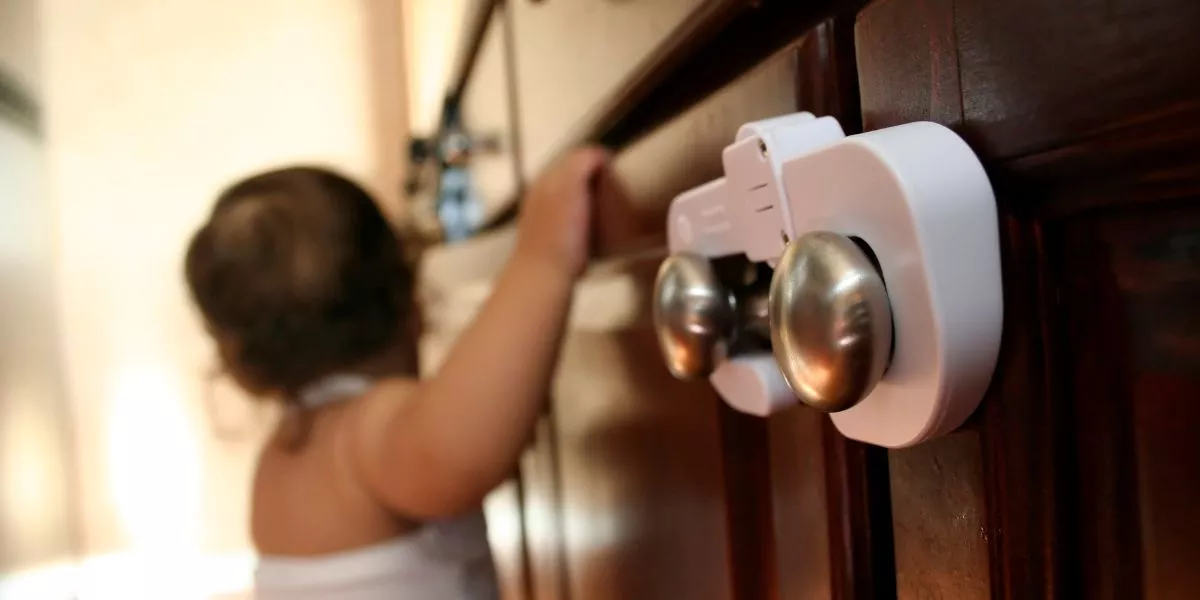
Blog
How Can I Baby Proof My Home to Ensure a Safe Environment?

Make your home safe for your little one by surveying each room for hazards, securing furniture, and installing safety gates. Ensure the crib meets safety standards and use childproof locks on cabinets. Cover outlets, secure heavy furniture, and keep appliances out of reach. Invest in safety gates and outlet covers, and practice safe storage for items. These are essential steps to baby proofing your home and creating a secure environment for your child.
Identifying Potential Hazards
To keep your baby safe, begin by surveying each room in your home for potential hazards.
Start in the nursery by ensuring the crib meets safety standards with proper spacing between bars and a firm mattress. Check for loose bedding or toys that could pose suffocation risks.
In the kitchen, secure cabinets with childproof locks to prevent access to harmful chemicals or sharp objects. Keep small items like magnets or batteries out of reach to avoid choking hazards.
Moving to the living room, cover electrical outlets with safety plugs and secure cords from blinds or electronics to prevent strangulation. Be mindful of heavy objects that could tip over, like TVs or bookshelves, and anchor them to the wall.
In the bathroom, store medications and cleaning products in locked cabinets and never leave water in the bathtub unattended.
Lastly, inspect staircases for sturdy railings and install safety gates at the top and bottom to prevent falls. By identifying and addressing these potential hazards, you can create a safer environment for your little one.
Securing Furniture and Appliances
Inspect all furniture and appliances in your home for potential safety hazards that could harm your baby. Start by securing heavy furniture like dressers, bookshelves, and TV stands to the wall using anti-tip brackets. Make sure all drawers and cabinets have safety latches to prevent your curious little one from getting into harmful substances or sharp objects.
Check for any sharp corners or edges on furniture and consider using corner guards to cushion them. Keep appliances like microwaves, ovens, and TVs out of reach by using appliance locks or placing them on high surfaces. Hide cords from lamps, TVs, and other electronics to prevent strangulation or tripping hazards.
Ensure that any freestanding furniture, like chairs and tables, are stable and won't easily tip over if your baby pulls on them. By securing furniture and appliances, you create a safer environment for your baby to explore and play without unnecessary risks.
Installing Safety Gates
Securing your home with safety gates is essential to prevent your baby from accessing hazardous areas. Safety gates can be installed at the top and bottom of staircases, in doorways leading to rooms with potential dangers, or to block off areas like kitchens and bathrooms. Make sure to choose safety gates that are hardware-mounted for extra security, especially at the top of stairs, as pressure-mounted gates may not be as sturdy.
When installing safety gates, ensure they're properly secured and that there are no gaps where your baby's head could get stuck. It's important to follow the manufacturer's instructions carefully to guarantee proper installation. Remember to opt for gates that are easy for adults to open with one hand but are too difficult for a child to manipulate.
Regularly check the gates for any signs of wear and tear, and make any necessary adjustments or replacements to maintain their effectiveness in keeping your baby safe. By installing safety gates strategically around your home, you can create a secure environment for your little one to explore safely.
Covering Electrical Outlets
Ensuring the safety of your baby involves covering electrical outlets to prevent any potential hazards. Babies are naturally curious and may try to stick objects into outlets, posing a serious risk of electric shock.
To baby proof your home, invest in outlet covers that plug securely into the outlets, making it difficult for tiny fingers to remove them. These covers are inexpensive and easy to install, providing a simple yet effective solution to keep your little one safe.
Remember to cover all outlets, even those that are higher up, as babies can quickly learn to climb and reach them. Additionally, consider using sliding outlet covers that automatically close when a plug is removed, providing continuous protection.
Regularly check the covers for any signs of wear or damage, and replace them as needed to maintain a safe environment for your baby. By taking these precautions, you can significantly reduce the risk of electrical accidents in your home.
Safe Storage Practices
To maintain a safe environment for your baby, it's crucial to practice safe storage habits for household items. Start by ensuring that all cleaning products, chemicals, and medications are stored in locked cabinets or high shelves out of your baby's reach. Remember to secure heavy or sharp objects that could potentially fall and cause harm.
Store small items like batteries, coins, or small toys in containers with secure lids to prevent choking hazards. Keep plastic bags, balloons, and other suffocation risks away from your baby's reach. Additionally, store electrical cords and wires neatly and out of sight to prevent tripping hazards.
Always store sharp objects like knives and scissors in locked drawers or cabinets. Consider installing safety latches on cabinets and drawers to prevent your baby from accessing hazardous items. By implementing these safe storage practices, you can create a secure environment for your baby to explore and grow without unnecessary risks.
